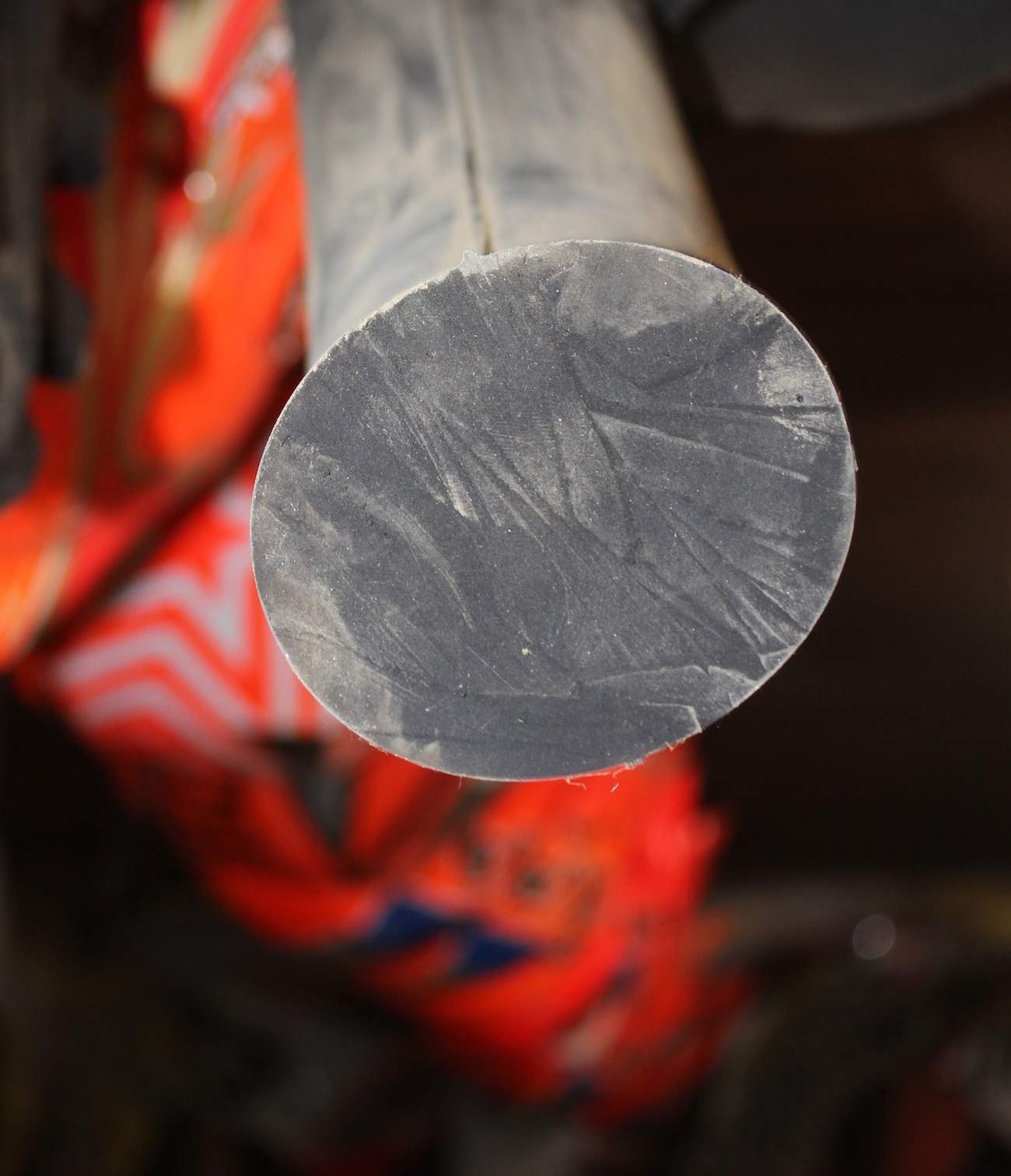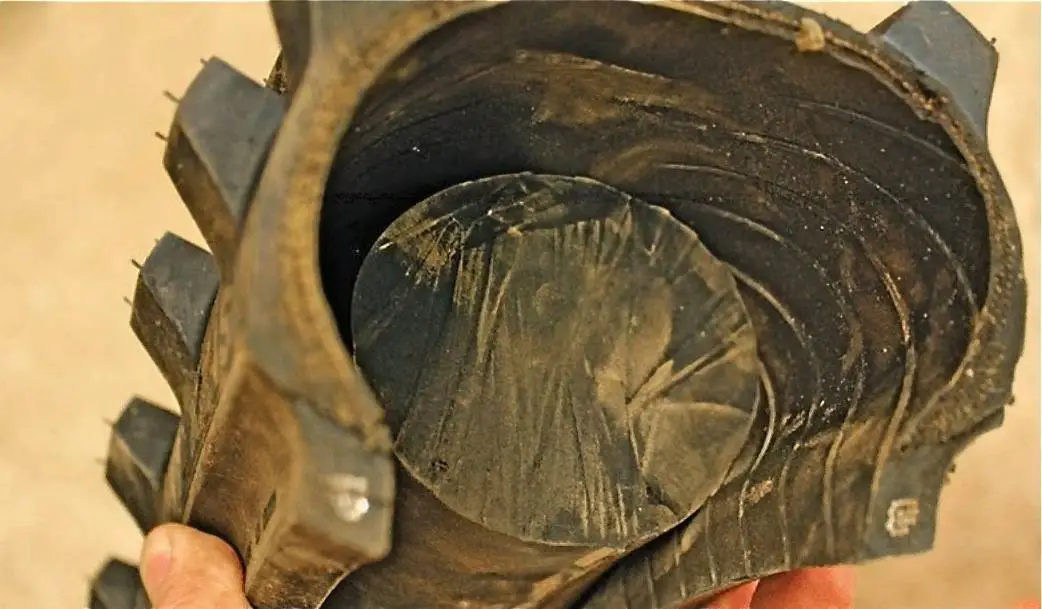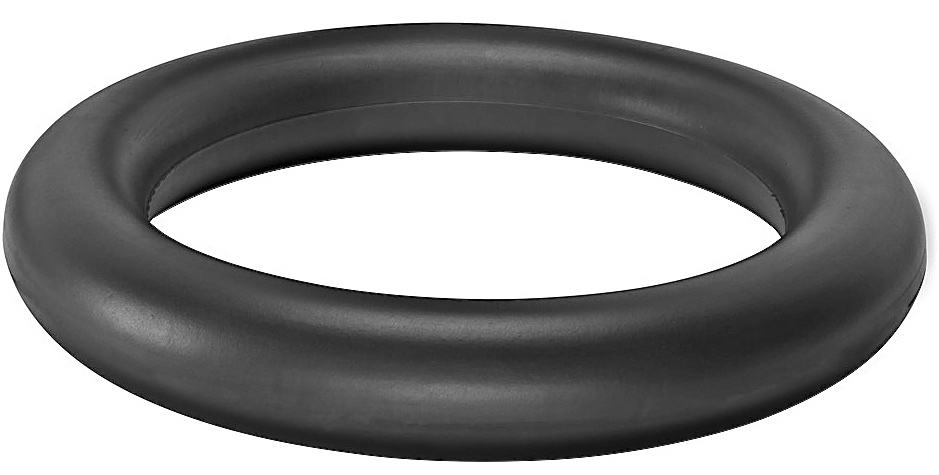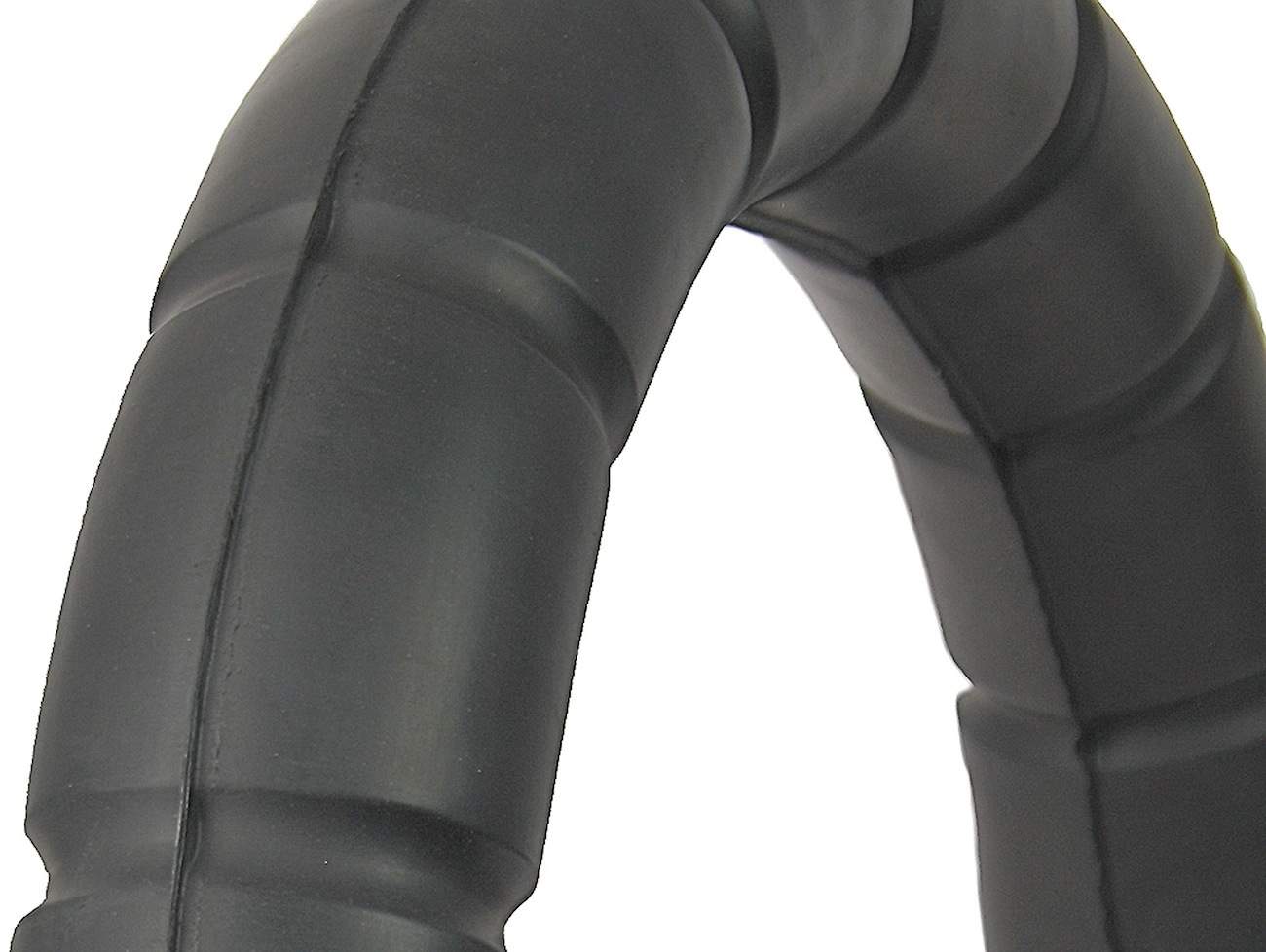ASK THE MXPERTS: SECRETS OF THE BIB MOUSSE
Click on image to enlarge
 This is what a mousse looks like when it is cut in half.
This is what a mousse looks like when it is cut in half.
Dear MXA
From my understanding a bib mousse is a solid rubber tube that can never go flat. To my way of thinking this would be the perfect tube for local racers to use. Why aren’t they more popular?
The Bib Mousse was first introduced by Michelin in 1984. It is named after their mascot, Bibendum (Michelin Man). A Bib Mousse is a foam ring insert that takes the place of a regular air-filled tube. The closed cells of the butyl honeycomb foam are filled with air or nitrogen. A smooth outer skin, much like the coating on chocolate pudding, allows the solid foam tube to be slipped inside a tire. Today, people refer to them as mousse tubes without the “bib” prefix.
Mousses are rider, tire and motorcycle suspension setup sensitive. European GP riders love the soft feel of mousse tubes and often race with them in both the front and rear tires. GP riders have developed a taste for the distinct handling sensation of the mousse tubes and use them on all types of courses. Once a rider adapts to a mousse-equipped bike, he will have trouble adjusting to the feel of standard pneumatic tubes.
American riders, as a rule, don’t like the way a mousse feels under cornering loads. Mousse tubes tend to create more sidewall rollover, which is especially noticeable in the front tire. American factory riders use mousses in their rear tires only (and only when the danger of a rear flat offsets the downsides of a Mousse tube). The American tracks where punctures are a major concern are Glen Helen, Unadilla and Washougal. Mousses have found some favor on super-hard, slippery indoor courses. The mousse delivers a low-tire-pressure feel that some riders believe flattens the contact patch for improved traction.
To achieve the best performance from a mousse, the fit between the mousse and the tire is critical. The mousse needs to put a certain amount of internal pressure on the inner tire casing in order for the tire to have good stability and to lessen sidewall rollover. This is a problem, since most tires vary in their inflated size for any given tread width and overall diameter. A 110/90-19 Michelin mousse in a Michelin tire won’t give the same feel as it would in the same size Dunlop tire. Since a mousse’s tire pressure cannot be changed, the mousse’s tire pressure feeling is dependent on the tire’s casing size.
A tire with a mousse rides like a tire with 8 to 12 psi of pressure. Since it is rare that a rider chooses 8 psi for his air-filled tubes, most riders do not like the feeling of a tire with such a low pressure. One backyard solution for this problem is to stuff a mousse designed for a larger rear tire in a smaller rear tire: a 120/90-19 mousse inside a 110/90-19 tire. Tightly compressing an oversized mousse inside a smaller tire casing creates a higher pressure feeling (it can raise the feeling closer to 12 psi). But, be forwarned—it doesn’t want to go into the smaller tire without a fight. Conversely, if the mousse feels too stiff, it is possible to take a hole bit and drill holes down the center line of the mousse to soften it up (this will shortened its lifespan, but make it feel more supple. This is best used on the rear mousse not the front).
There are three major downsides of mousse tubes; First, they are at least one-pound heavier per wheel than a heavy-duty air-filled tube (and the weight disadvantage is even greater against the lighter standard-issue tubes). All of the mousse’s weight is unsprung. Second, installing a mousse into a tire is very difficult. It requires tire bead clamps, very long tire levers and lots of lubricant. Tire experts suggest that you don’t try to install a mousse yourself until you have watched a pro mount a mousse. Motion Pro offers a good selection of mousse mounting tools. Third, getting an old mousse out of tire is a major pain. Fourth, mousse tubes are close to ten times more expensive than a tube and have a very short shelf life. They shrink in size in only a few months. They run hotter than an air-filled tube, and when they heat up they change in size, get stiffer and often bond to the tire carcass. Don’t expect to get more than a few tire changes out of a mousse before it has to be replaced. Fifth, they have very dead feeling. If you bounced a wheel with a mousse installed and then did the same with a standard, air-filled wheel. The one with a mousse tube will bounce much less. On a track, the wheel with the mousse gives a much deader feel when hitting bumps, rocks and square edges.
There are several next generation mousses on the market; Here are two of the most promising:
NITROMOUSSE BY NUETECH
Nitromousse is the latest mousse to come out and it is designed for noth offroad riders and motocross racers. It differs from the typical offroad mousse, used by desert and Baja racers, in that the Nitromousse’s tube-shaped elastomer foam is charged with nitrogen. The nitrogen provides a livelier and more predictable feel than the typical mousse. Most important is that a Nitromousse can never go flat. You can learn more about the Nitromousse at www.nitromousse.com.
GIBSON MOUTECH SPEEDY MOUSSE
Gibson Tyres have developed a new-style of foam mousse for offroad bikes, although not for motocross bikes yet. The Gibson Moutech Speedy Mousse is basically a hollow mouse tube that has an air chamber sealed into the design (with a special coating to lessen air leakage). Thus, no tube.
 The air chamber represents 4.5 psi of air in the chamber and, when mixed with the thick foam mousse and the sidewalls of the tire, comes close to mimicking a normal offroad tire’s feel. Called “ACCT” (Air Chambers Core Technology), it will get its first workout in the European Hard Enduro circuit.
The air chamber represents 4.5 psi of air in the chamber and, when mixed with the thick foam mousse and the sidewalls of the tire, comes close to mimicking a normal offroad tire’s feel. Called “ACCT” (Air Chambers Core Technology), it will get its first workout in the European Hard Enduro circuit.









Comments are closed.